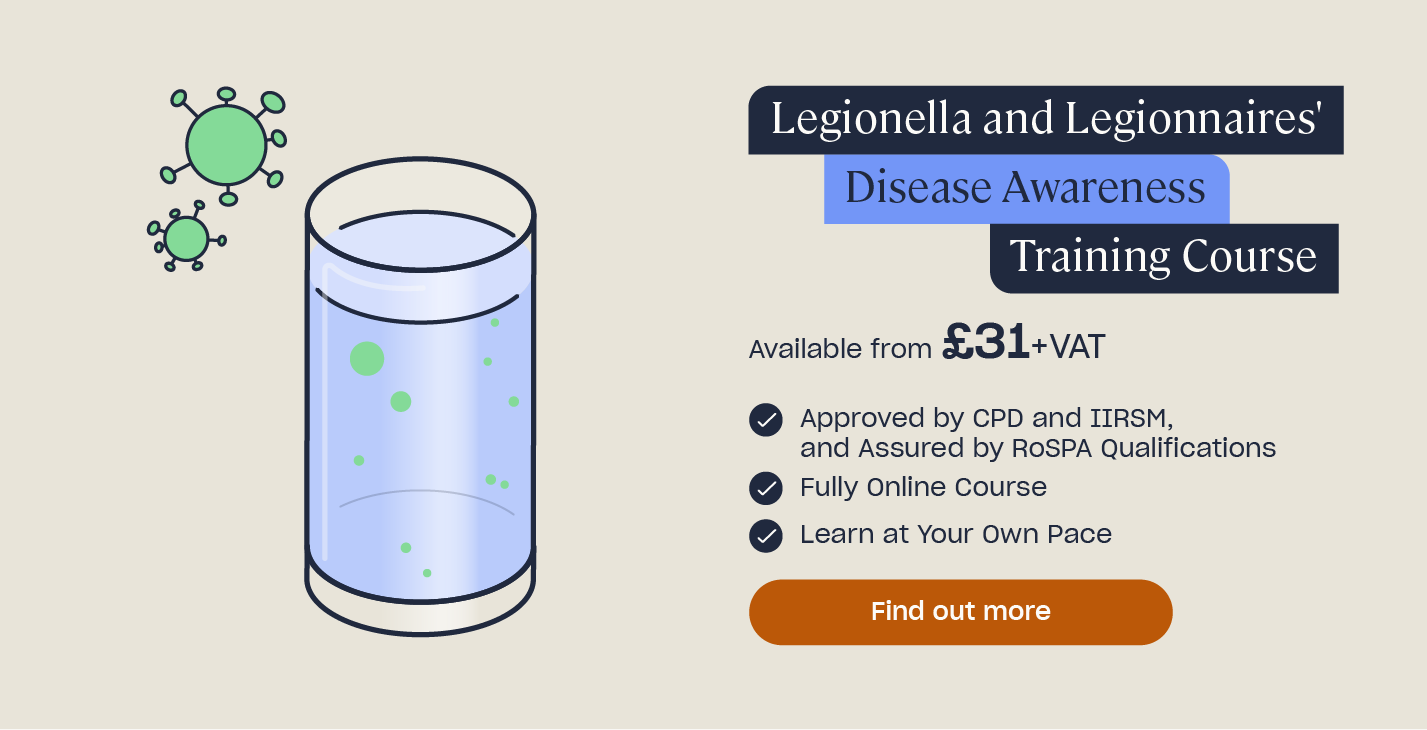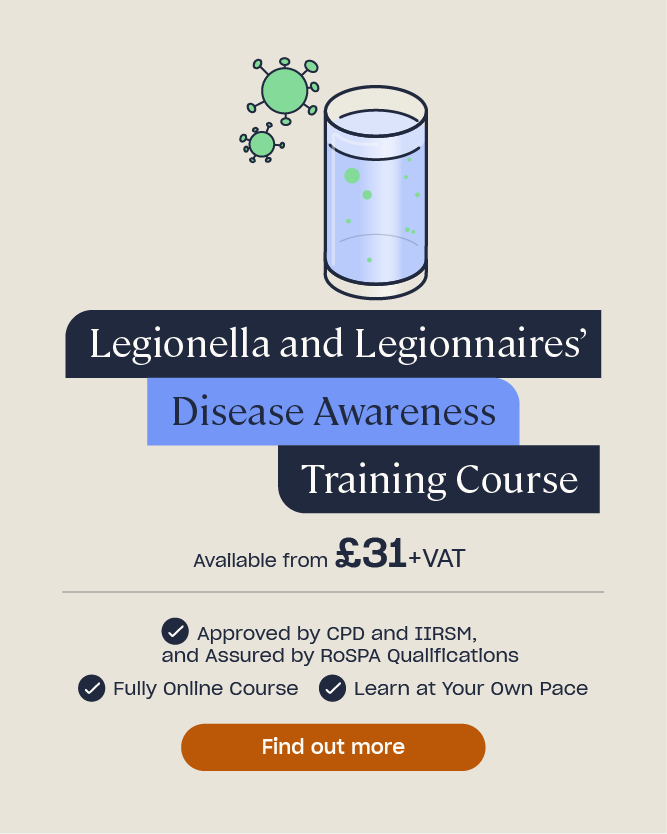Legionella Checklist for Landlords
Legionella bacteria, if not carefully monitored and controlled, can have devastating effects on people’s health – including those who live in rental properties. It can cause a range of pneumonia-like illnesses, contracted when a person inhales small water droplets containing the bacteria, and is commonly found in man-made water systems such as air-conditioning units, hot water tanks and whirlpool baths.
What are my Responsibilities as a Landlord?
As a landlord you have a legal responsibility to keep your tenants safe from harm – but how can this be done? Whilst there are no specific landlord certificates to prove legionella safety, you should ensure that you have carried out an assessment of the risks and have done as much as you can to prevent them from harming your tenants. Having a written record of your risk assessment is essential for showing that you’re complying with this responsibility.
Need a Course?
Landlords have an obligation to be aware of the dangers of Legionella and ensure a risk assessment is done to keep their tenants from harm. Our Legionella and Legionnaires’ Disease Awareness Training provides details on how to carry out a risk assessment and explains what should be included so that you have an awareness of how to identify Legionella hazards and react appropriately.
Legionella Checklist for Landlords
The Legionella Checklist for Landlords Template that we have created includes a list of potential hazard areas that you may need to consider, along with space to add any additional hazards at your premises.
Using the checklist, you should:
- First, identify whether the hazards are present at your premises and make a record of what these are specifically. For example, is the water likely to be stagnant? Is it held at a constant temperature? Is water sprayed into the air and so more likely to be inhaled?
- Think about how you can reduce the risks of each hazard and look at what control measures are needed. For example, can the water tanks be sealed off better? Do you need to prevent access to pumps and pipework? Do tenants need to be advised to clean their baths and showers more frequently?
- Finally, make a note of who needs to take action to implement the control measures (this may be yourself, a plumber or another specialist) and the date that it should be completed by.
Once completed, you can use this checklist to contribute towards your risk assessment as it gives you a good overview of the legionella hazards present and how you can minimise them.
Further Resources:
- The Health & Safety Legal Responsibilities of Landlords
- How to Clean Stagnant Water: Guidance on Managing Legionella Bacteria
- Legionella and Legionnaires Disease Awareness Training







